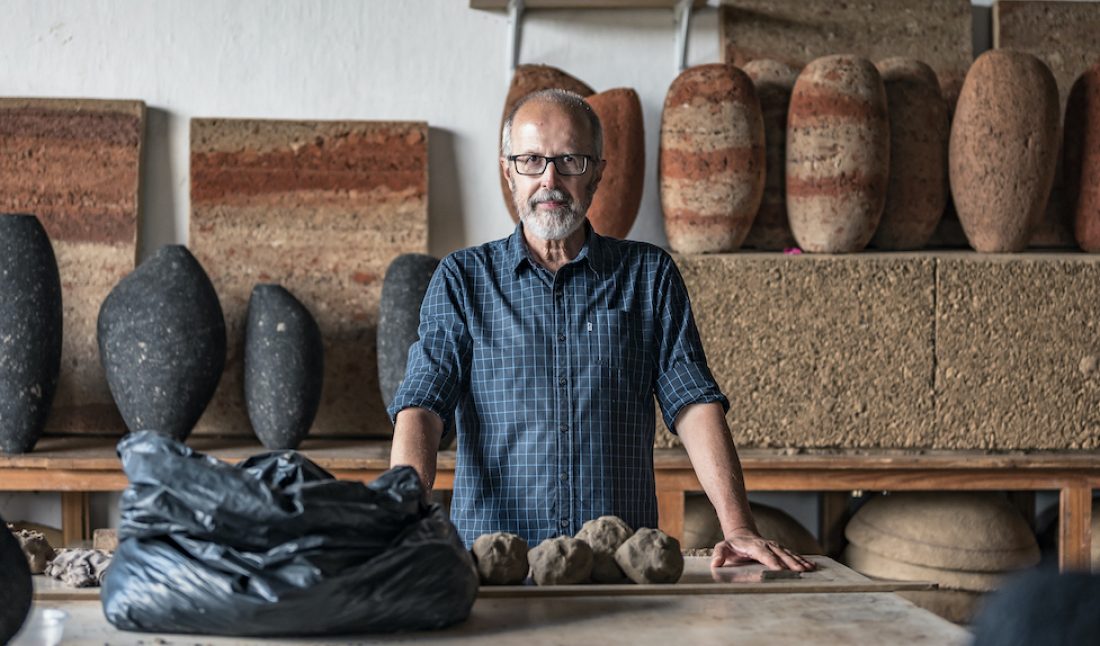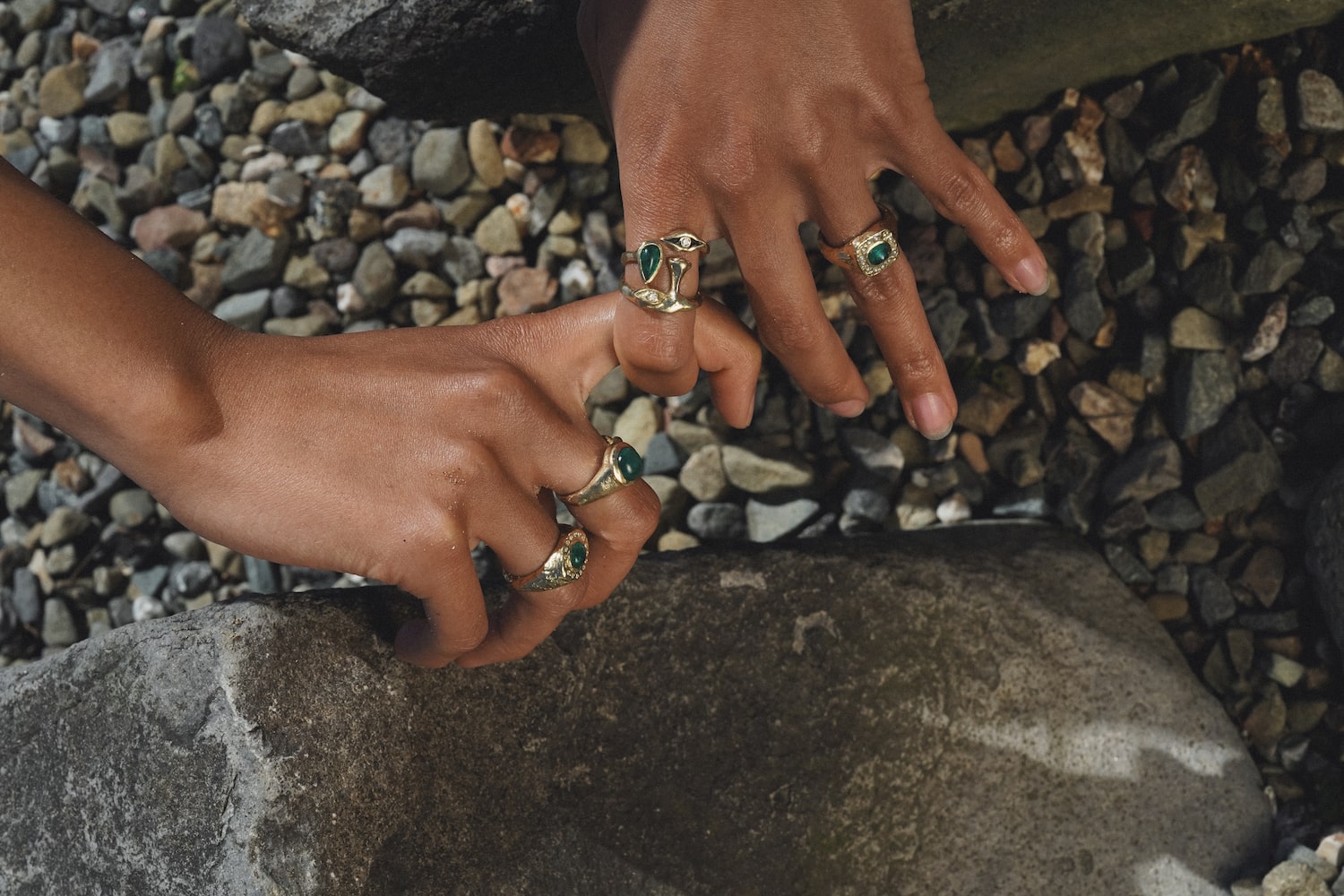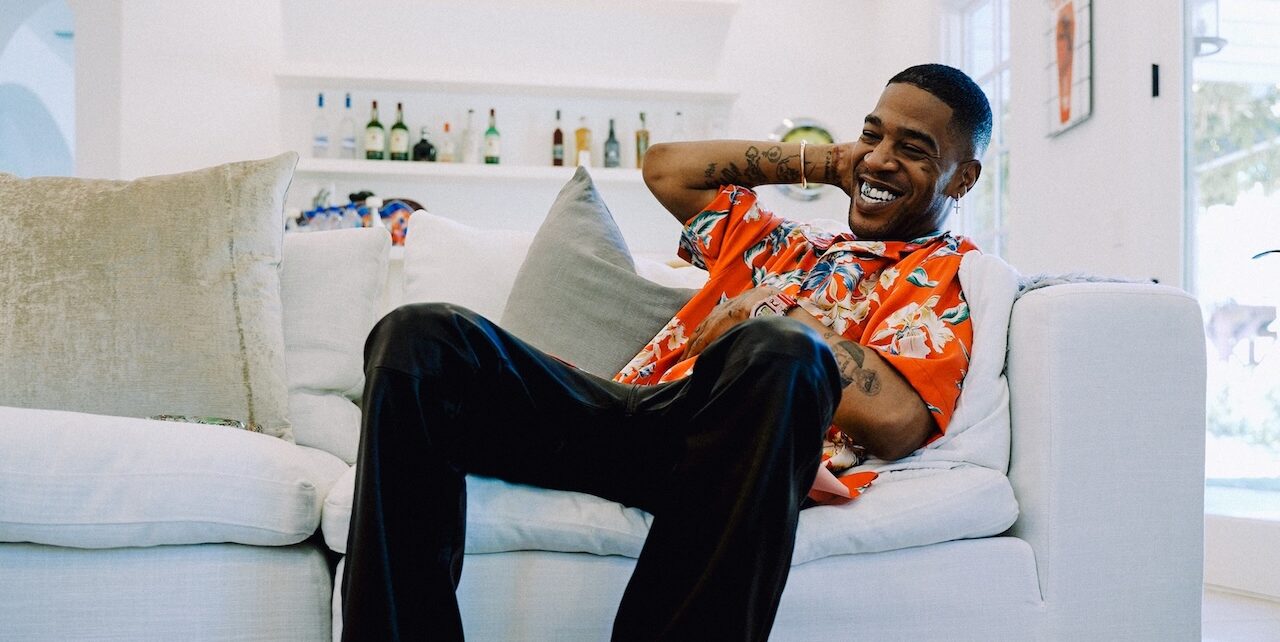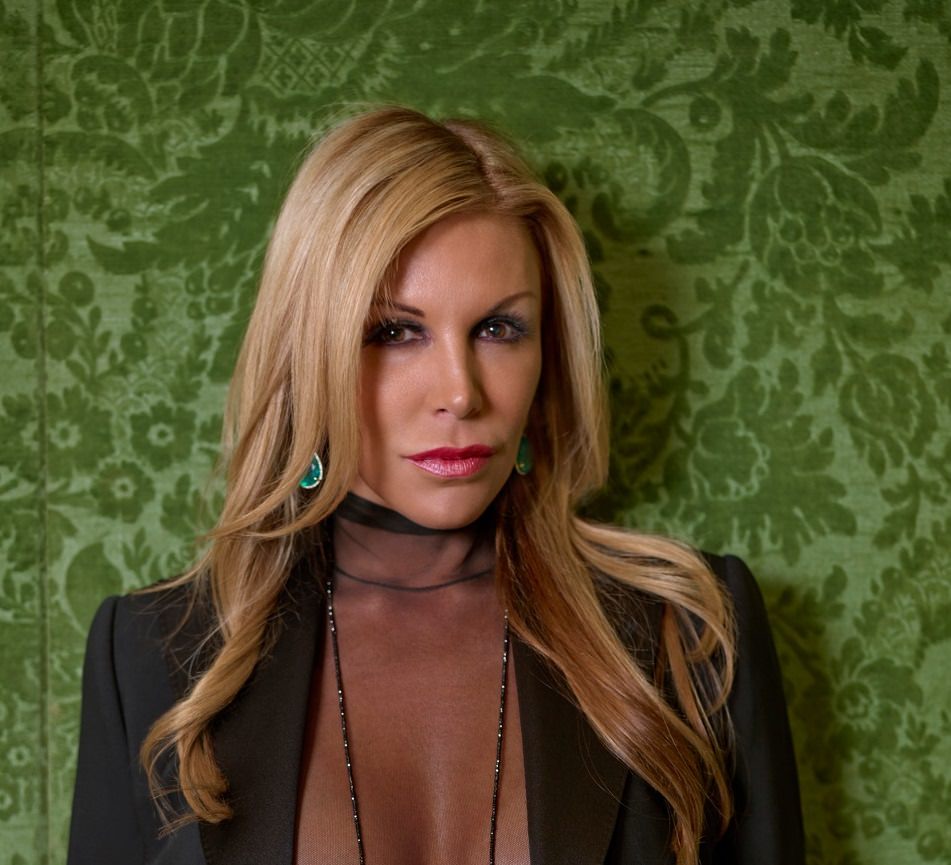Domingos Tótora is a Brazilian artist, craftsman, and interior designer recognized for his sustainable creations made of wood-based cardboard. He transforms the recycled material, gleaned from supermarkets in his hometown of Maria da Fé, into raw matter through a technique all his own. Mixing shreds of found cardboard with water and mashing it to a pulp, he then presses it into flat panels or hand-molds it into sculptural pieces before it is sun-dried or kiln-fired. Natural pigments from iron oxides, clay, and dirt are added for varying colors and textures while representing his community’s ancestral traditions of building houses with mud and water.
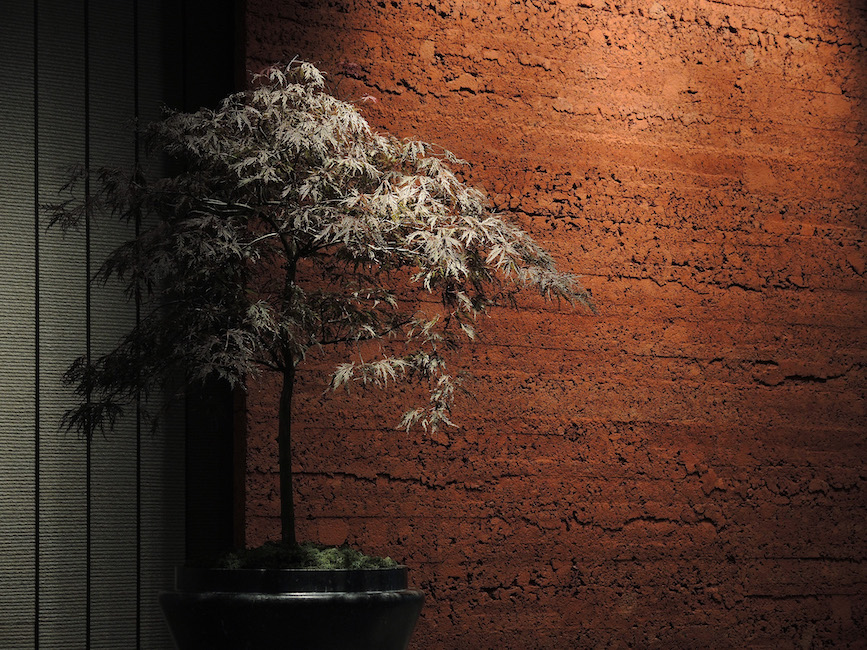 An artwork by Domingos Tótora at Aman NY, courtesy of Kalpa Art Living
An artwork by Domingos Tótora at Aman NY, courtesy of Kalpa Art Living
Sustainability has been a topic ingrained in Tótora since his childhood. Growing up in Maria da Fé’s mountainous region of Minas Gerais, where he is still based today, gave him the ability to think, create, and live sustainably. Now in a space that blends his home and studio, he creates small- and large-scale wall sculptures, vases, seating arrangements, tables, and more for galleries, hotels, brands, and boutiques all around the globe, including Aman NY, Santa Monica Proper, and Loewe.
Last year, Tótora was a finalist for the LOEWE FOUNDATION Craft Prize for his “Âmago” series, which blends beauty, sustainability, and functionality. He also took part in a group presentation entitled “Climatopia” with the Los Angeles–based nature- focused gallery Sage Culture, which has represented him since 2017. Whitewall spoke Tótora about the deep meaning behind the material, and why each of his creations is rooted in respect for nature.
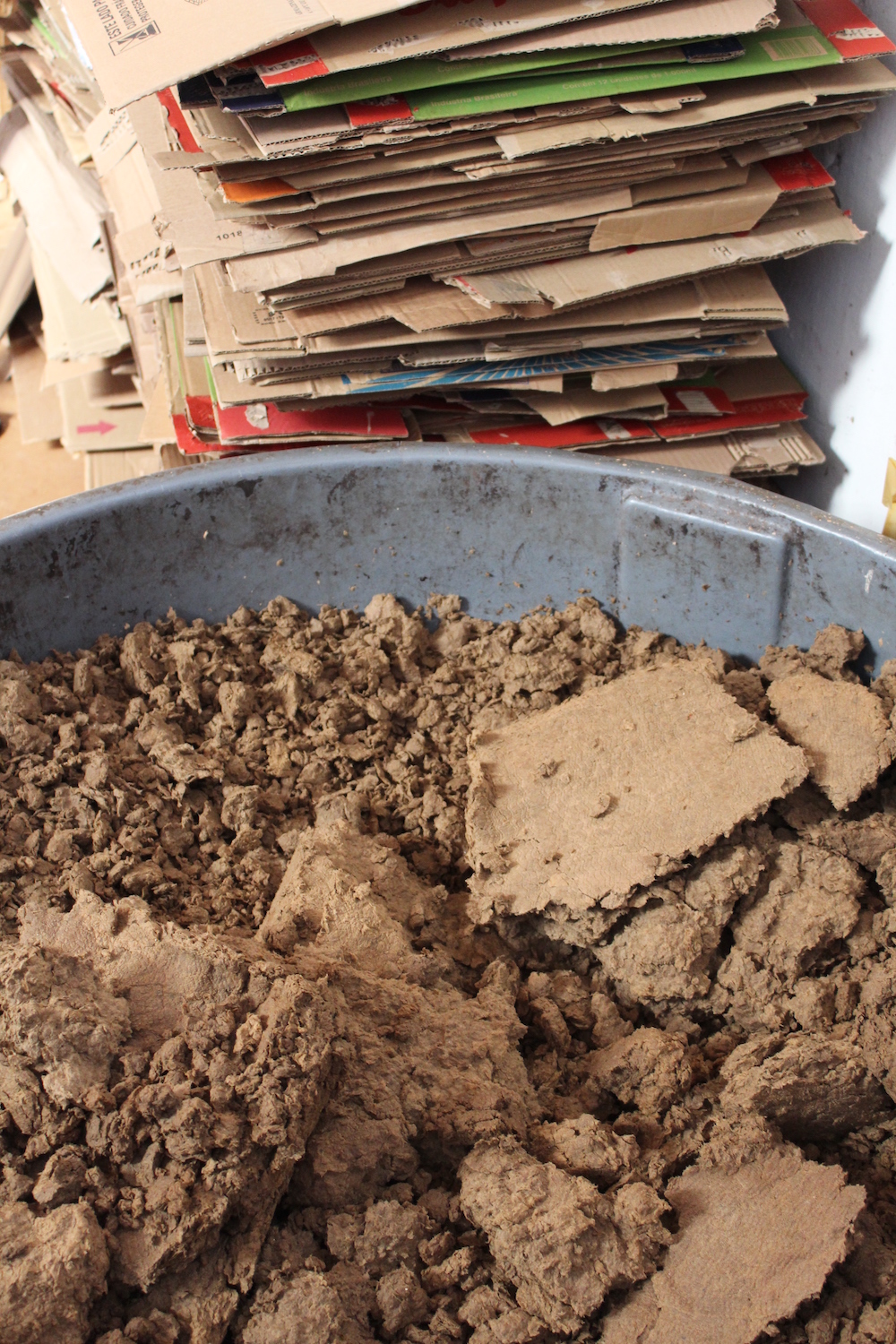 Courtesy of Domingos Tótora.
Courtesy of Domingos Tótora.
WHITEWALL: Your practice is rooted in a material you make—made out of found cardboard, mixed with water, transformed into a pulp, and pressed. How did this begin?
DOMINGOS TÓTORA: I discovered the beauty of working with cardboard as a medium while teaching art classes to children. During one of these classes, I made a pulp out of a cardboard package I found in my backyard and molded a piece with the leftover material. To my surprise, when I returned to it later, it had dried into a shape resembling an organic shell. This sparked great emotion and curiosity within me, leading me to continue exploring the mysteries of this cellulose material. As I delved deeper into this process, I noticed the large amounts of discarded cardboard packages at the doors of supermarkets in my city, Maria da Fé, and decided to use them as source material for my sculptural pieces, which have a strong tactile appeal due to their massive form.
WW: How would you describe your role as an artist and designer today? What do you aim to communicate through your creations?
DT: Through my creations, I aim to challenge the distinctions between art and design, drawing upon my diverse background as both an artist and a designer. Rather than adhering to a single label, I embrace the roles of artist, craftsman, and designer as I explore the limitless potential of this multifaceted realm, where the boundaries between art and design are fluid and ever-evolving.
Through my manipulation of discarded cardboard, I craft artworks that intimately connect with the organic forms in my surroundings. Rather than being inspired by nature, I strive to exist in sync with it, recognizing the interconnectedness of all living things. My artistic process is a natural, even poetic ongoing flow from chaos, as I deconstruct and reorganize materials to imbue my creations with a sense of vitality. Through my constant reinvention and exploration of the boundless possibilities of matter and nature, I view them as objects to be examined and understood in my work.
As an artist and designer, I seek to imbue my work with a strong sense of belonging and the celebration of uniqueness in a globalized world.
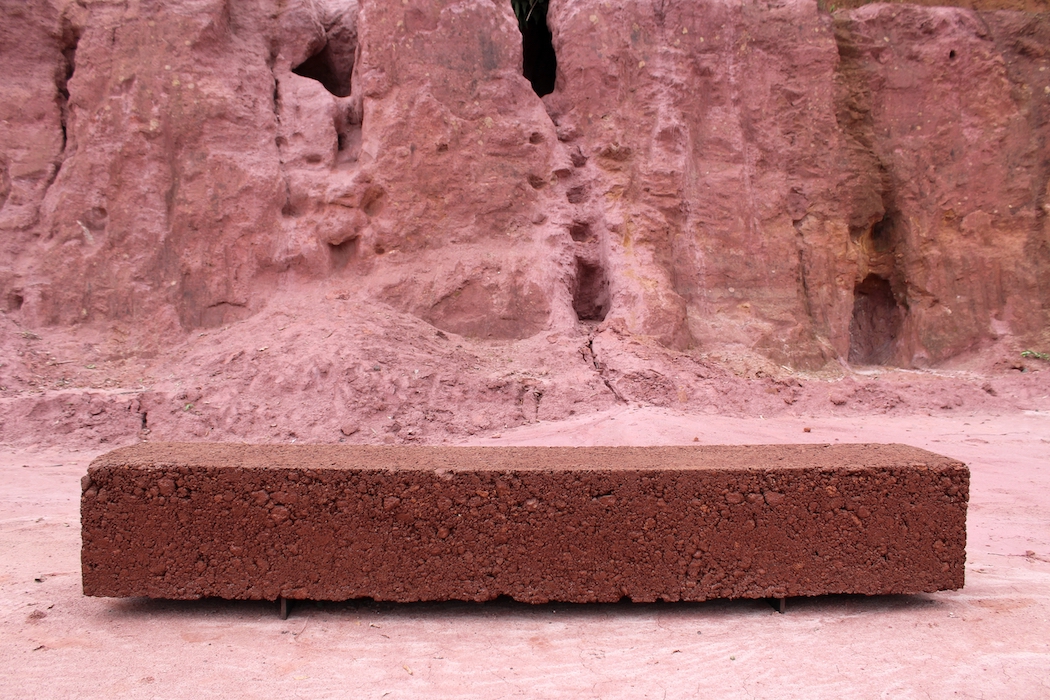 Banco Terrão, courtesy of Domingos Tótora.
Banco Terrão, courtesy of Domingos Tótora.
WW: You spent your childhood immersed in nature and regularly helped your father at the farm and assisted locals in building their homes. How did that impact your idea of respecting nature and designing with it in mind?
DT: The time of my childhood was a significant period of development that continues to influence me. When I look back on my past, I realize that my artistic language today is infused with the shapes and textures I encountered during that time, including the red earth of the ravines and the textured walls of the settlers’ houses built using the ancestral technique of Pau a Pique. These walls, made of pressed clay on a bamboo lattice and painted with white clay called Tabatinga, required regular touch-ups using a mixture of red and ocher earth to achieve various shades. I greatly enjoyed helping with this process of transforming white clay into paint—an experience that has had a lasting impact on my artistic development.
WW: With your unique material, you’ve created an array of art and design objects. What is the process like when creating various works from the same material?
DT: This material has incredible plasticity, and every day I am more impressed with its versatility. While I am open to researching other materials, the possibilities with recycled cardboard have not yet been exhausted. I often say that cardboard comes from wood, and with my technique, it returns to its origin and becomes wood again due to its strength.
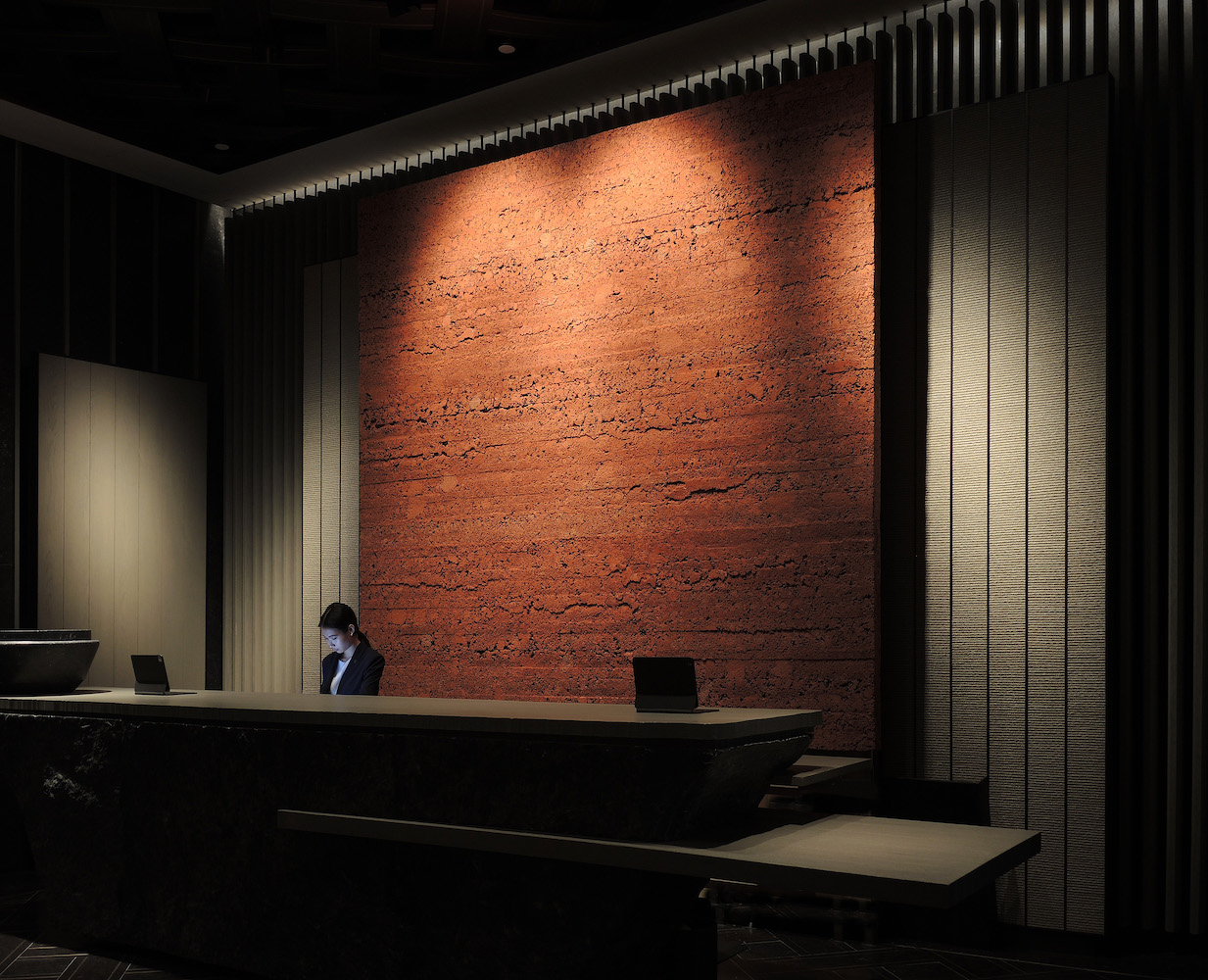 An artwork by Domingos Tótora at Aman NY, courtesy of Kalpa Art Living.
An artwork by Domingos Tótora at Aman NY, courtesy of Kalpa Art Living.
WW: Last year, you took part in a group exhibition, “Climatopia,” at Sage Gallery. How are you working together to build awareness or a philanthropic mission tied to nature?
DT: The “Climatopia” group show was part of a three-act exhibition program called “Equilibrium Project.” The gallery directors and I considered various artworks that would explore this theme. Using my expertise in working with natural materials, I created pieces that aimed to reimagine our critical but fragile connection with the earth. The works were meant to raise awareness about the degradation of the rainforest, a common form of human interference that has negative consequences for biodiversity, local communities, and the climate.
For the exhibition, Sage Culture partnered with the nonprofit organization Amazon Watch, and ten percent of all sales proceeds were donated to the organization to support its efforts in the Amazon rainforest. The gallery owners and I believe that we all have a role to play in preventing the tipping point, or the point at which the rainforest’s degradation becomes irreversible. This project was our way to contribute to this important and crucial subject.
WW: Can you tell us about your home in Maria da Fé?
DT: Maria da Fé is a small town located at the top of the Serra da Mantiqueira in the state of Minas Gerais, so I prefer to utilize natural light in my home, as it adds a tangible quality to the space. My house serves as a sanctuary of peace and quiet, where I am able to construct narratives and welcome the memories of my roots through the inclusion of furniture that belonged to my grandfather. These pieces harmonize well with my Água coffee table and two modernist armchairs by Paulo Mendes da Rocha, creating a contemporary contrast. I always strive to incorporate natural elements into my home, such as my collection of prehistoric stone axes found in the region, as everything holds a personal connection to me.
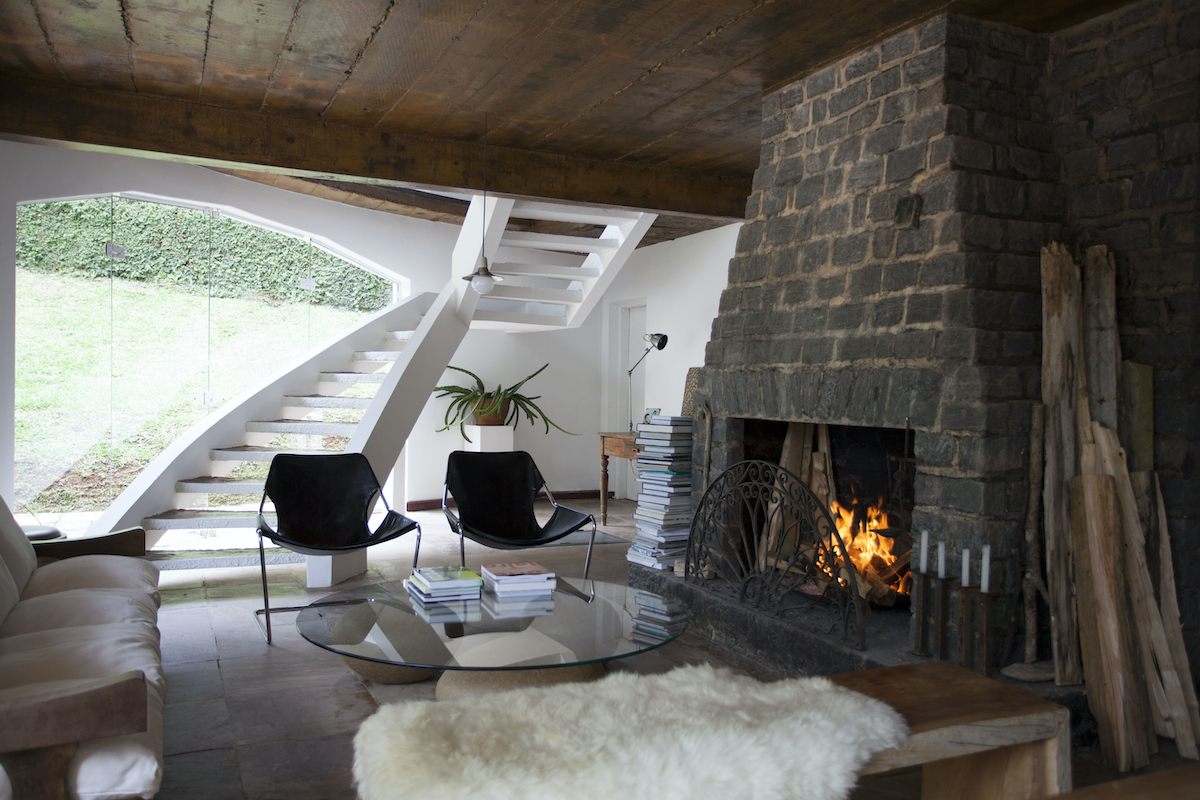 Photos by Marco Antônio.
Photos by Marco Antônio.






